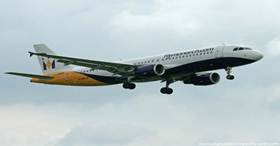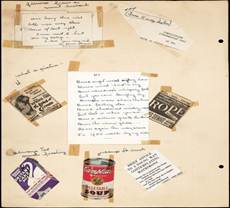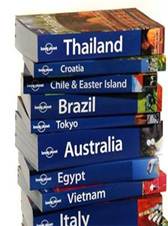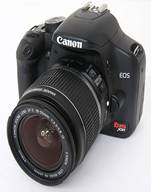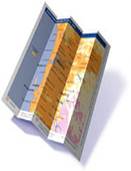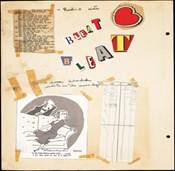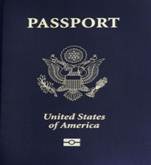Web Quest
|
A WebQuest for 7th Grade World Geography Designed by Kirsten Harrison kirsten_harrison@hilldale.k12.ok.us Introduction | Task | Process | Evaluation | Conclusion | Credits | Teacher Page Introduction What is life like in other countries? Are the tourist attractions you see in pictures truly worth visiting? What are they really like? Maybe you have been fortunate enough to travel outside the United States, but for most of us, we can only imagine. Now, the good news: Your travel dreams are coming true! You have been selected as a participant in a new school program, and you have received an all-expenses paid trip to the nation of your choice! You and three others will be traveling to a country outside the United States to see famous sites and observe the culture.
Through your voyage, you will discover what life is like for people in a foreign country and learn more about the amazing places the country has to offer. Let’s go!
Each of you will have a role for the journey that will help you complete your scrapbook as a group. Your finished scrapbook should put everything listed above together into short, narrative journal entries with pictures. Your final scrapbook presentation may be done in several ways. You may create a PowerPoint presentation, post the information on poster board, or create a real scrapbook with paper. Decide which presentation is best for your group, and be creative!
The Process Step 1: You are now ready to begin your journey! Decide as a group which country you will be traveling to. Since each of you will have a role in recording what took place, decide now what each person’s role will be. The Travel Guide The Travel Guide will decide which three places your group is visiting. These might be historical sites, natural wonders, tourist attractions, religious sites, or government sites. You can travel to separate cities, or the tourist attractions can be different places in the same city. Research these places first and make the decision for the group of which three you will see. For the scrapbook, you will also be the one to help your group explain why you chose each location, why each is an important place, and what you saw there.
The Navigator The Navigator will do research on the climate and environment of the country. You will also decide for the group when the best time to travel is. Once the three places you are visiting are chosen, you will map out your journey from start to finish. For the scrapbook, you will help your group include details about the weather and landscape for your journey, tell what time of year you are traveling and why, and include the map of your journey.
The Photographer
Step 2: Now that you know what each person will be doing, visit the links below to find the answers for your research. Take detailed notes to use later as you create your scrapbook. Infoplease almanac, atlas, and encyclopedia ipl2 directory of web sites for research on countries Article on the most amazing places to visit in Europe Tourist attractions in North America Tourist attractions and culture in Australia Article on the coolest places to visit in Europe Tourist attractions in South America Rick Steve's travel guidebooks
Once your research is completed, you will work together to share your information with each other and put together a scrapbook of your voyage. Decide which format you will use for your scrapbook (PowerPoint, poster board, or real scrapbook with paper). As a group, write out the journal entries using everyone’s researched information.
Step 4: Last, review your work. Use the list below to make sure that your completed scrapbook has all of the following parts:
You will receive a group grade for your scrapbook. It is important for everyone to participate to have a complete project and receive a good grade. Grades will be assigned based on the rubric below.
Now that you have visited a foreign country, you know more about what life is like outside the United States. You also learned more about some of the famous places we have all heard about. Be prepared to answer these questions during your presentation for the class:
We are glad you made it home safely! We can’t wait to see the scrapbook of your “Voyage to Another Land”! Image Credits:
Globe - http://english.sxu.edu/sites/wordpress/libraryblog/?attachment_id=749
Plane:
Scrapbooks: http://www.poetryfoundation.org/images/features/SextonScrapbook2.jpg http://www.poetryfoundation.org/images/features/SextonScrapbook4.jpg
Map: http://ohloneschool.com/Main%20Images/Folded%20map.jpg
Peasant Woman: http://www2.ambientdesign.com/gallery/showimage.php?i=1652
Travel Guides: http://hotels-fairy.com/competitions/
Camera: http://www.dcresource.com/reviews/canon/eos_rebel_xsi-review/
Passport: http://www.uspassportnow.com/blog/c/passport-services/passport-application-passport-services/
Teacher Page PASS Objectives Met: 7th Grade World Geography Standard 1. The student will use maps and other geographic representations, tools, and technologies to analyze relationships between people, places, and environments of world regions from a spatial perspective.
Standard 4. The student will evaluate the human systems of the world.
NETS-S Objectives Met: 1. Creativity and Innovation Students demonstrate creative thinking, construct knowledge, and develop innovative products and processes using technology. Students:
2. Communication and Collaboration Students use digital media and environments to communicate and work collaboratively, including at a distance, to support individual learning and contribute to the learning of others. Students:
d. contribute to project teams to produce original works or solve problems
3. Research and Information Fluency Students apply digital tools to gather, evaluate, and use information. Students:
4. Critical Thinking, Problem Solving, and Decision Making Students use critical thinking skills to plan and conduct research, manage projects, solve problems, and make informed decisions using appropriate digital tools and resources. Students:
5. Digital Citizenship Students understand human, cultural, and societal issues related to technology and practice legal and ethical behavior. Students:
6. Technology Operations and Concepts Students demonstrate a sound understanding of technology concepts, systems, and operations. Students:
Last updated on August 15, 1999. Based on a template from The WebQuest Page |
|||||||||||||||||||||||||||||||||||||||
|
|





